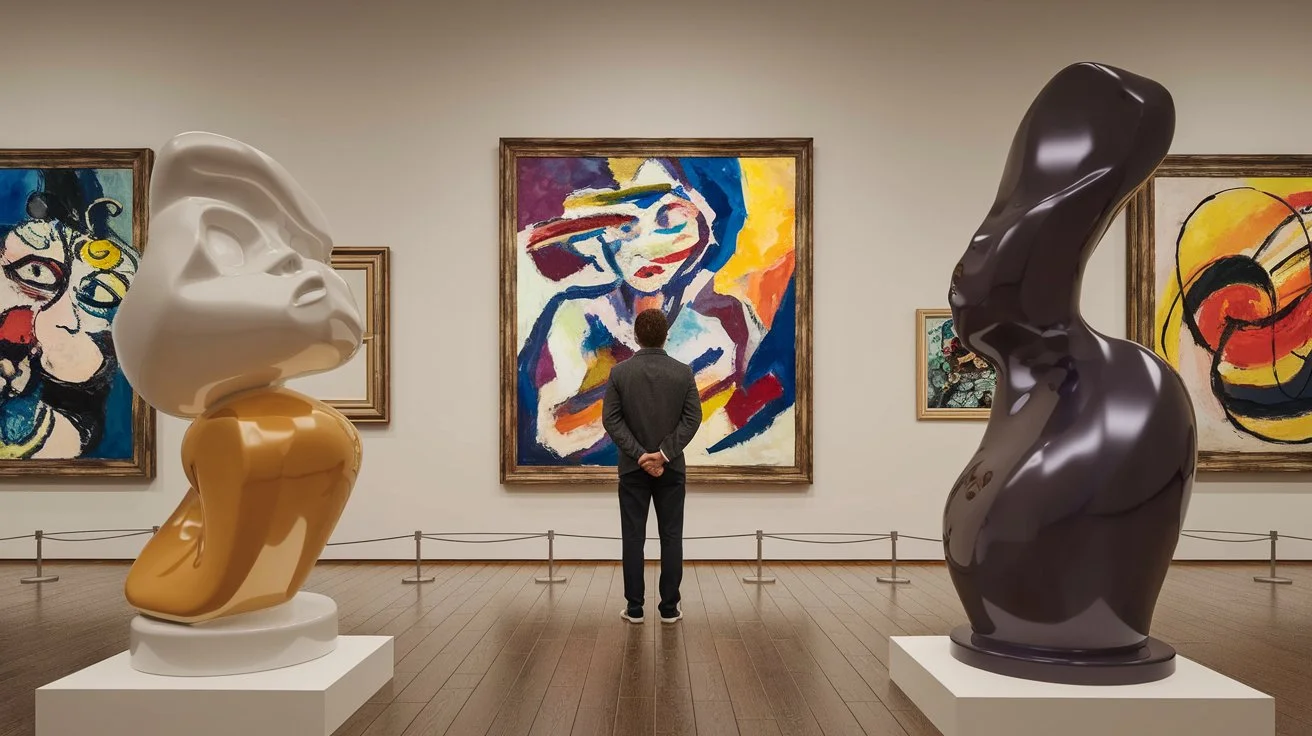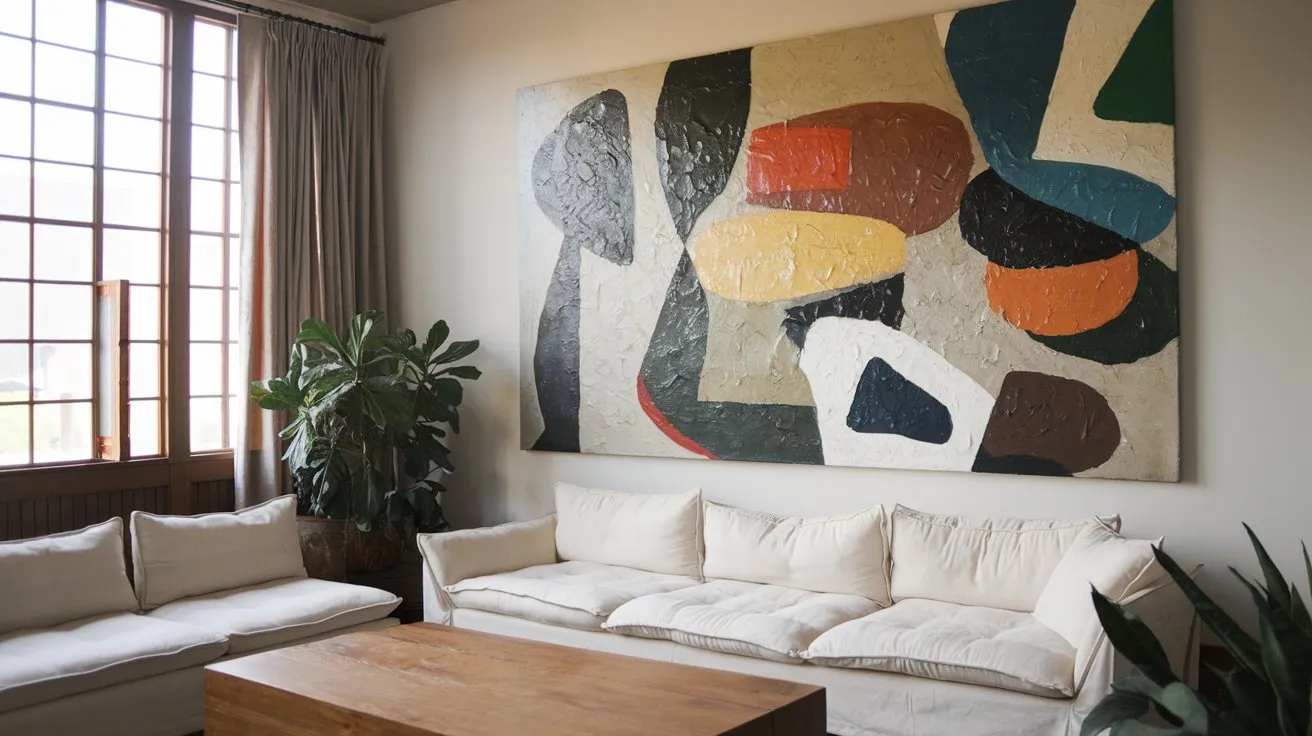Table of Contents
Introduction: What Does It Mean to “Define Abstract”?

Abstract art may seem perplexing, but it’s more than a style it’s a way of experiencing and interpreting the world. Whether you’re an art enthusiast or a curious beginner, understanding abstract art is a transformative journey. This article explores its meaning, history, and impact on creativity and perception.
Define Abstract: What Is Abstract Art?
Defining Abstract Art in Simple Terms
To define abstract, we start by acknowledging that it is not about depicting reality but about using colors, shapes, and forms to express ideas and emotions. Rather than focusing on recognizable figures or scenes, abstract art invites you to connect with the piece on a more personal, subjective level. It’s about what the artwork makes you feel, not necessarily what it shows.
- Key Insight: Abstract art eliminates the constraints of representation, allowing for a freer exploration of human emotions and creativity.
- Creative Takeaway: By defining abstract art this way, you begin to see it not as a confusing concept but as a rich, emotional experience.
Abstract vs. Representational Art
In order to understand define abstract art more fully, it helps to compare it to representational art, which is focused on accurately depicting objects or scenes from the real world. While representational art shows you what things are, abstract art shows you what feelings or ideas those things might evoke.
- Examples: In representational art, you may see a portrait or a landscape, while in abstract art, you might find dynamic shapes and colors that suggest the emotion of the subject instead.
- Key Insight: The key difference is that abstract art invites you to interpret, rather than recognize, what you see. It’s all about personal perception.
The Historical Roots of Abstract Art
Origins of Abstract Art: A Break from Tradition
Abstract art didn’t emerge out of nowhere; its roots trace back to the early 20th century, during a time when artists were eager to break free from the rigid norms of traditional, representational define abstract art. Visionaries like Wassily Kandinsky and Kazimir Malevich were among the first to challenge the convention of depicting the real world, seeking to express inner emotions and philosophical concepts through abstraction.
- Key Movements:
- Cubism: Pioneered by Picasso and Braque, Cubism deconstructed reality into geometric shapes, which laid the groundwork for abstract styles.
- Futurism: This movement embraced movement and speed, influencing more abstract forms of art that capture dynamic energy.
- Dadaism: Rejecting logic and reason, Dadaism created room for spontaneous, abstract works that inspired later define abstract expressionism.
- Key Insight: The creation of abstract art was revolutionary, challenging long-established conventions and giving rise to a new wave of artistic freedom and innovation.
The Rise of Abstract Expressionism
The mid-20th century saw the emergence of Abstract Expressionism, a style that took abstraction to new heights. Artists like Jackson Pollock, Mark Rothko, and Willem de Kooning were at the forefront of this movement, expressing emotion through spontaneous, gestural brushwork, and vast color fields.
- Characteristics:
- Gestural Abstraction: Pollock’s chaotic, yet controlled splatters and drips were an expression of raw emotion.
- Color Fields: Rothko’s large blocks of color aimed to elicit deep, emotional responses from the viewer.
- Non-representational: Abstract Expressionism moved away from any attempt at representation and focused entirely on the emotional and physical experience of painting.
- Key Insight: Abstract Expressionism solidified abstraction’s place as a powerful mode of personal expression and emotional depth in art.
How Abstract Art Influences Modern Thought
Abstract Art as a Tool for Expanding Consciousness
The influence of abstract art goes far beyond its visual appeal. It challenges you to think differently about reality and perception. By rejecting traditional forms of representation, abstract art forces you to confront ideas in a more open and flexible way.
- Key Impact on Modern Philosophy:
- Perception vs. Reality: Abstract art challenges the idea that what we see is the ultimate truth. It invites you to see beyond the surface and think more deeply about the world.
- Emotion over Logic: Abstract art encourages you to prioritize your emotional response over intellectual analysis, reshaping how you process not just art, but life.
- Key Insight: By defining abstract art through its influence on perception and emotion, you can see how it has inspired major shifts in philosophy, literature, and psychology, encouraging you to embrace ambiguity and open-mindedness.
Abstract Art in Modern Society

In today’s society, the principles of abstract art extend beyond galleries and museums. Abstract aesthetics can be found in everyday design, advertising, fashion, and architecture. The freedom that abstract art represents has infused modern culture with new ways of thinking and creating.
- Examples of Abstract Influence:
- Graphic Design: Logos and marketing materials often use abstract symbols to communicate complex ideas in a simple form.
- Interior Design: Abstract patterns and forms are widely used in furniture and wall décor to create striking, emotional spaces.
- Fashion: Designers often incorporate abstract patterns into clothing to make bold, modern statements.
- Key Insight: Abstract art’s principles have transcended the art world, infiltrating a wide array of industries and influencing how we communicate, design, and engage with the world around us.
The Psychological Power of Abstract Art
Emotional Responses to Abstract Art
One of the most compelling aspects of abstract art is its ability to evoke strong emotional reactions. Unlike realistic art, abstract art doesn’t provide a clear narrative, allowing you to project your own emotions, memories, and experiences onto the piece.
- The Emotional Spectrum in Abstract Art:
- Calming Effects: Soft colors and gentle forms can evoke a sense of peace and tranquility.
- Excitement and Energy: Bold, chaotic compositions can trigger excitement or even anxiety, depending on the viewer’s personal associations.
- Introspection: Abstract art’s ambiguity often leads you to reflect on your own emotions, pushing you toward personal discovery.
- Key Insight: Abstract art is a powerful tool for emotional exploration, offering a unique way to connect with both the artist’s intentions and your own subconscious thoughts and feelings.
How Abstract Art Stimulates Creativity

The very nature of abstract art encourages creative thinking. By breaking free from the need to depict reality, abstract art pushes you to think outside the box, approach problems from new angles, and unlock your own creative potential.
- Unlocking Your Creative Potential:
- Non-linear Thinking: Abstract art asks you to think about things in new, non-traditional ways—helping you to expand your creativity beyond conventional boundaries.
- Embracing Ambiguity: The lack of clarity in abstract art challenges you to make sense of what’s before you, stimulating your imagination and creative problem-solving skills.
- Key Insight: Whether you’re an artist or a business professional, abstract art teaches you to embrace ambiguity and think creatively, offering new ways to approach challenges and opportunities.
Conclusion: The Lasting Influence of Abstract Art
As you’ve seen, defining abstract art goes beyond understanding the shapes and forms used in its creation. It’s about recognizing the profound impact abstract art has had on modern culture, philosophy, and even your own creative thinking. Abstract art doesn’t just reshape the canvas—it reshapes the way you perceive the world. By embracing abstract art, you’re opening yourself up to a world of limitless possibilities, personal introspection, and a deeper connection to your emotional and creative potential.
FAQ: Defining Abstract Art and Its Influence
Q1: What does “define abstract” mean in art?
A1: To define abstract in art means to describe a style that focuses on shapes, colors, and forms to express emotions and ideas rather than depicting real-world objects or scenes.
Q2: How does abstract art influence the way we think?
A2: Abstract art encourages new ways of perceiving the world, focusing on emotional responses and personal interpretations, which can lead to more open-minded, creative, and reflective thinking.
Q3: Why is abstract art important in modern culture?
A3: Abstract art plays a significant role in shaping modern culture by influencing not just visual arts but also design, philosophy, and innovation, encouraging creative freedom and exploration.
Q4: Who are the key artists who defined abstract art?
A4: Key artists who helped define abstract art include Wassily Kandinsky, Piet Mondrian, Jackson Pollock, and Mark Rothko, each contributing to the evolution of abstract ideas in their own way.
Call to Action: Explore the World of Abstract Art
Now that you’ve gained a deeper understanding of abstract art and its profound influence, why not take the next step? Visit an art gallery, explore abstract designs in everyday life, or try creating your own abstract work. By diving into the world of abstract art, you’ll gain new perspectives on creativity, emotion, and self-expression.
